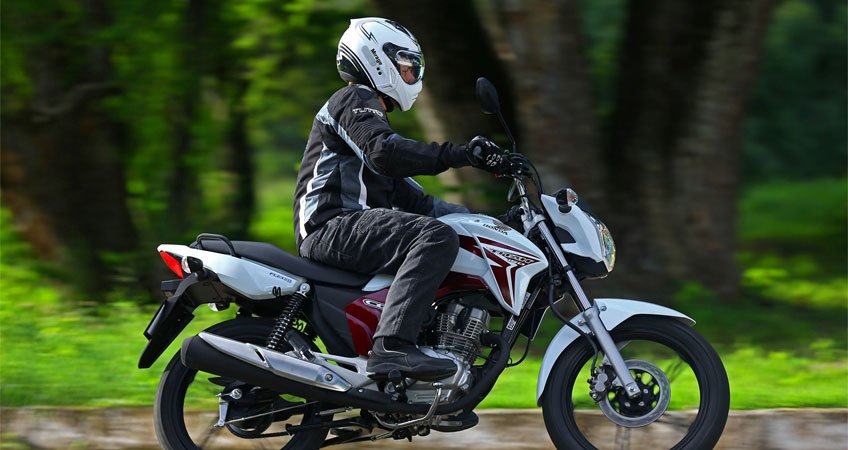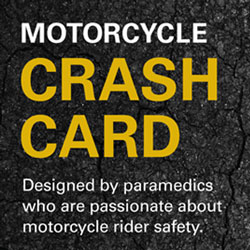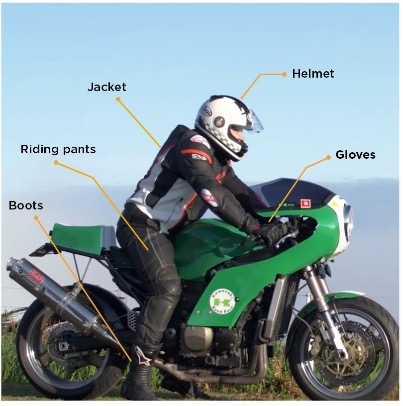Motorcycle Road Safety Tips

Safety tips for Motorcycle Riders
Gear up
Contrary to popular belief, looking cool is not the top priority when getting on your bike. No matter how hot it is outside, shorts, a T-shirt and thongs are not proper riding attire. Even jeans provide minimal protection against injury and road rash if you happen to slide. The best protection is with leathers or reinforced jackets, pants and boots.
Glasses or goggles are a must if you have an open-faced helmet and to protect your hands, always wear gloves. In warm weather there is specially designed gear that is intended for ventilation and cooling. Always wear an approved motorcycle helmet.
More information
MotoCap https://www.motocap.com.au/
Helmets https://crash.org.au/ and https://roadsafety.transport.nsw.gov.au/stayingsafe/motorcyclists/motorcyclehelmets.html
Stay in the comfort zone
Know your abilities and make sure that neither your chosen route nor motorcycle is more than you can handle. Your bike should fit you; that means that your feet should be able to rest flat on the ground when seated – no tiptoes. And if the bike feels too heavy for you, it probably is.
You want to be able to easily get on and off your motorcycle and the handlebars and controls should be easy for you to reach. The more familiar you are with your route, the easier it will be for you to focus on safety instead of not missing a turn. And if you’re riding with a group, don’t push yourself just to keep up with the pack. Always ride to your comfort level, not theirs.
Inspect your ride
Give your bike a good once-over before hitting the road. Things you should check out every time you get on your motorcycle include tyre pressure, mirrors and lights. Taking a quick walk around your bike will give you an idea if there are any loose bolts, leaks or other potential mechanical hazards.
You also need to be diligent about regular care and maintenance. Don’t delay fixing something that needs attention, conduct all recommended regular maintenance including oil changes, chain and suspension adjustments, and stay on top of brake pad and tire wear.
Use your head
While mirrors are there for a reason, you can’t solely rely on them to remain aware of what is in your immediate riding space. To be aware of your surroundings and your position in relationship to those around you, you need to use your head.
Experienced riders know that it’s important to keep your head and eyes up while rounding corners and that the safest way to change lanes is to actually turn and look over your shoulder to make sure you are clear. You will also be able to get a feeling for whether other drivers are paying attention to you.
Watch the road
As a motorcycle rider, you need to pay attention to the road you are riding on. Err on the side of caution when going into curves; be vigilant for potential gravel or other unstable road conditions. Be careful when riding over rail level-crossing tracks because the paint can be slippery—the same goes for the white lines at intersections.
Find your happy place
One of the biggest dangers to a rider is getting on your bike in the wrong state of mind. Riding angry, drowsy or distracted can be a recipe for disaster.
Remember, when you’re on a motorcycle you are ultimately the only one on the road looking out for you. If your mind and emotions are anywhere other than the road ahead, you are susceptible to making rookie mistakes that can end in a crash, injuries or worse.
Know the forecast
Weather is a regular foil to perfect driving conditions and the dangers of wet roads multiply when you’re on two wheels. Not only do you have half the stability of a car, but the lack of a windshield and your body’s exposure to driving rain add to the risk.
Lack of visibility is a rider’s worst nightmare and until you’ve been caught on your bike in the rain you will never understand just how much being pelted by rain drops at 80km/h or even 50 km/h can hurt.
Make sure two isn’t a crowd
Before offering to ride with a passenger on board, make sure you are comfortable with another rider in the pillion seat and also make sure that they know how to do their part to make sure the ride stays safe. Ensure they have the right gear to keep them safe on the ride too.
They need a helmet, protective clothing and the right shoes. You also need to make sure they know what to do when you turn corners or need to stop. It might be a good idea to take a test run together in a safe environment like a parking lot before hitting the open road or the stop-and-go of city traffic.
Brake for motorcycles
Just because you’re on a motorcycle doesn’t make it any easier for you to see other motorcycles. Always double-check when changing lanes or turning. You also need to practice braking in all sorts of conditions.
To make sure that a quick stop won’t result in tragedy, always give extra space to the vehicles in front of you and know how to stop suddenly without locking your brakes. If your motorcycle doesn’t already have anti-lock brakes, you might want to upgrade. Having ABS brakes on your bike can reduce your chances of being in a fatal crash significantly.
Spread the love
There’s no denying that motorcycles are often overlooked or regarded as the second-class citizens of the road. As a rider, you have the chance to help make that different. When you’re on the road, always drive as if you are an ambassador for motorcyclists everywhere.
Always ride with courtesy, care and awareness. Don’t let an urge to prove a point or retaliate against an inconsiderate driver overwhelm your better judgment – after all, that takes away all the joy, which is why you’re riding in the first place.
Safety tips for driving around motorcycles
Always check your blind spots
Motorcycles are smaller than other vehicles and can be difficult to see in your vehicle’s blind spots. Take your time to check twice for motor riders before changing lanes, merging or turning.
Take extra care when passing a motor rider
Ensure you signal your intention to pass a slower motorcycle rider by using your indicator and provide ample passing distance. Only merge in front of a motorcycle rider when you are at least several car lengths ahead of it.
Remember that motorcycles react more quickly than other vehicles
Make sure that you maintain an adequate following distance behind motorcycles. Rear-ending a motorcycle can be fatal to the rider, particularly if you drive a large, heavy vehicle.
Impacts of weather conditions on motorcycle riders
All types of weather can impact motorcycle riders while riding. Rain prevents good visibility for both the rider as well as for other road users, making it difficult to see motorcycles on the road. Windy conditions can make it difficult for motorcycle riders to control their vehicle on the road. Hot humid weather can impact the motorcycle rider’s health.
Motorcycles at night
Help motorcycle riders at night, by increasing your following distance and turning off your high-beam lights when you notice an approaching motorcycle.
Stay in your lane
Motorcycles are legally entitled to their own lane of traffic. Keep your vehicle at a safe distance from the motorcycle providing enough space to stop or swerve suddenly if you have to.
Inform motorcycle riders of your intention to turn.
Turn on your indicator earlier than usual when there is a motorcycle riding behind you, to give them ample warning and to avoid a rear end crash.
Approach intersections with care
Many crashes involving motorcycle riders and other vehicles occur at intersections. At intersections, come to a complete stop, view and obey posted traffic signs and signals and always look both ways twice for approaching traffic, before proceeding.
Watch for turning motorcycles
Self-cancelling indicators did not become standard on motorcycles until the late 1970s. There are still many motorcycles on the road today that do not have the self-cancelling indicators we have become accustomed to. If you notice a motorcycle is driving with an activated indicator for an abnormal distance, increase your following distance so that you have time to react whenever the rider decides to turn.
Look twice for motorcycles
Before you cross a lane of traffic to turn right, take a second look for approaching motorcycles. Crashes involving a turning vehicle and an approaching motorcycle can be very severe, often because the motorcycle T-bones the vehicle while it is mid-turn.
Most multi-vehicle crashes involving motorcycles cause serious or fatal injuries to the rider. Take extra caution around motorcycles and always look twice.
Additional Information
Ride to Live https://ridetolive.nsw.gov.au/
NSW Centre for Road Safety https://roadsafety.transport.nsw.gov.au/campaigns/ride-to-live.html
Source: https://driving-tests.org/beginner-drivers/sharing-the-road-with-motorcycles/
Source: https://www.safewise.com/blog/10-motorcycle-safety-tips-every-rider-should-know-2/

Motorcycle Crash Card
The motorcycle Crash Card is a small card that motorcyclists and their passengers can carry in their helmets. The card provides emergency service personnel with the rider’s personal information saving valuable time and assisting with treatment, especially if the rider is either unconscious or unable to communicate.

Hornsby Survive the Ride workshop
Presented by David Tynan, a motorcyclist and committee member of the NSW Survive the Ride Association.
Thursday 9 October 2025, 6.00pm-8.30pm







